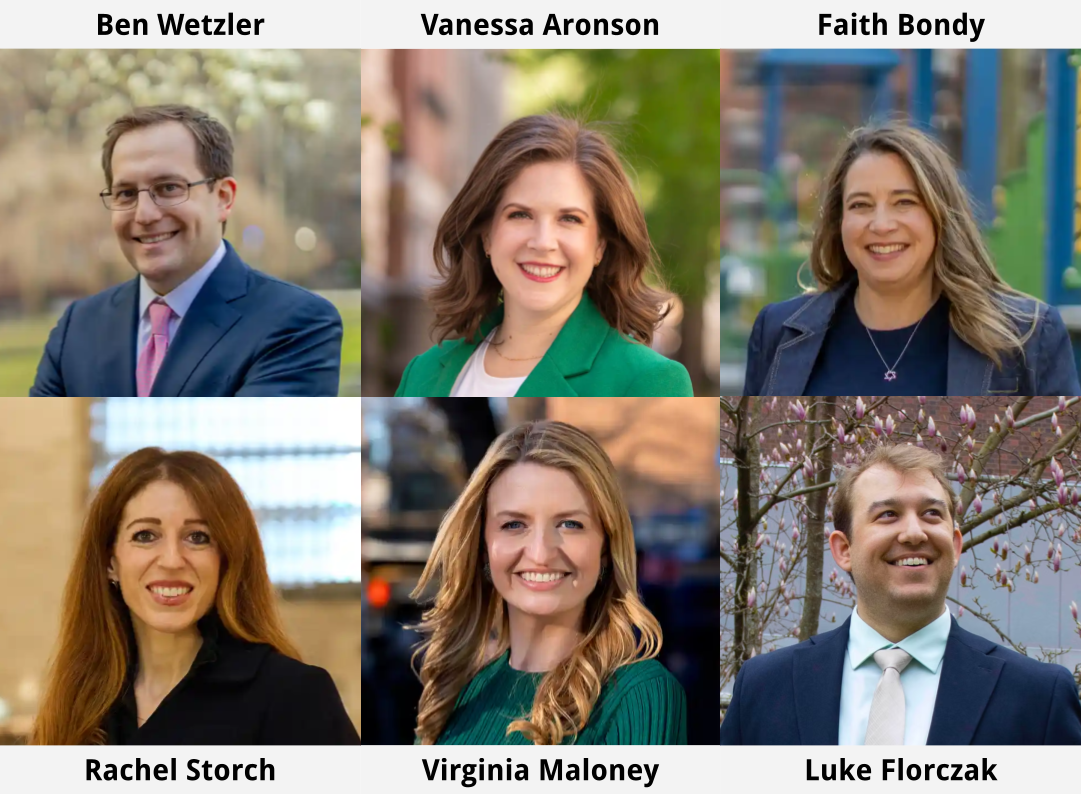63% of Manhattan East Side Voters Still Undecided on Their City Council Pick
Only one in five voters are ready to rank more than one candidate. The race for District 4 is still wide-open.
Six weeks out from Primary Day, most Manhattan District 4 voters don’t have a clue who will top their ballots. A Third Avenue Institute “pulse poll” of reliable Democrats — people who actually voted in the 2021 city primary election — found two numbers that should make every campaign manager sweat:
63% couldn’t name a single candidate they intend to support.
Just 21% could name more than one candidate — a problem in a ranked‑choice system that asks you to list up to five.
These figures come from a small sample (0.35% of likely voters), but they confirm what I’ve been feeling on the street: no consensus has formed. That void is in stark contrast with the huge amount of cash going into the campaigns: $1.5 million raised so far, or about $60 for every voter who turned out last cycle.
In this post, I’ll break down the results of the Third Avenue Institute’s latest poll, and what District 4 can teach us about city elections more broadly.
The Race for the East Side
City Council District 4 covers parts of Manhattan’s Upper East Side, Midtown East, and Stuyvesant Town. Since 2018, the district has been represented by council member Keith Powers, who has reached his term limit and is running to be Manhattan’s borough president. The district is home to 177,000 residents; 102,000 are registered voters.1 In the most recent major city primary election, in 2021, 24,000 people voted in District 4.2

Six candidates are vying for the Democratic party’s nomination — which all but guarantees victory in the November general election. Between private campaign contributions and public matching funds, five candidates have each raised over $250,000.3
The election is on June 24th, and early voting starts on June 14th. New York uses a ranked-choice voting system for city primary elections. Voters list up to five candidates in the order of preference. Everyone’s first‑choice votes are counted; if nobody tops 50%, the last‑place candidate is eliminated and those ballots move to their next pick. The cycle repeats until only one candidate remains, who wins.
An Undecided District
The Third Avenue Institute surveyed 84 verified District 4 registered Democrats who voted in the 2021 city primary election, according to official records. These are highly engaged voters, who are most likely to turn out again. To ensure representativeness, poll responses were reweighted according to the overall age and sex breakdown of the district’s voters.
Even the most reliable voters don’t yet know who they plan to support. Only 37% of voters knew who they would vote for, and only 21% were prepared to rank more than one candidate on their ballot.
Among the voters who do know their preferences, Virginia Maloney appears to be leading the race, with 38% of first-choice votes. This is not surprising, as Maloney has a big name-recognition advantage: her mother, Carolyn Maloney, was the area’s Congresswoman for 30 years.
Nevertheless, the District 4 City Council race remains competitive, with four other candidates each garnering between 21% and 12% of first-choice votes in the Third Avenue Institute's poll. With the right campaign messaging, any candidate could win this race, especially if they are able to win enough second- and third-choice votes.
The poll indicates that public safety is a critical topic for voters, with 42% listing it as their most important issue. The cost of housing is second-highest, at 20%.
The Invisible Race
I’m surprised how few District 4 voters have made up their minds. The first candidate entered the race over a year ago. In recent months, campaigns have been out there shaking hands, knocking on doors, dialing the phones, and trying to connect with residents. You’d think that $60+ per likely voter would be buying a lot of mailers, posters, and ads.
Yet, from walking around the district, it would be easy to be completely oblivious about the upcoming election. There’s very little election signage, and our letterbox hasn’t received any fliers from candidates. Most political news is focused on the mayoral election and federal issues in Washington.
Even for a dedicated voter, it takes a lot of effort to study candidates’ campaign materials and develop your own preferences. A few local news outlets have mentioned the race, but there’s been little coverage of the stakes of the contest and how voters should conceptualize the candidates.
The Home Stretch
The race for District 4 will come down to the final weeks of the campaign. Endorsements will likely be critical, as these give voters a shortcut to identify which candidates are strongest on the issues they personally care about most.
In the coming weeks, I’ll share a voter guide here on Sidewalk Chorus, identifying the candidates I recommend voting for in District 4 and across the city to build a more affordable, thriving city.
In the interim, make sure you’re registered to vote at your current address, and consider signing up to vote-by-mail if that would be more convenient for you.
District 4 summary on the NYC Population FactFinder by the Department of City Planning, and the 2025 City Council District Summary report by the NYC Board of Elections
This is based on my own analysis of the NYC Voter File. The boundaries of District 4 were slightly adjusted between these two elections due to redistricting, and this number refers to the voters within the current boundaries.
Campaign Finance Summary for the 2025 Citywide Elections from the NYC Campaign Finance Board.



So Maloney at 38%. What about the other candidates?